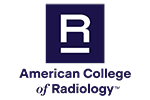Chronic Dyspnea-Noncardiovascular Origin
Dyspnea is the experience of breathing discomfort or shortness of breath and has many possible causes. When it is not caused by a heart problem, dyspnea is called “noncardiovascular.” When dyspnea lasts for more than 1 month, it is considered chronic.
For chronic dyspnea with no known cause, chest x-ray is an appropriate first imaging test. Chest CT with or without intravenous contrast may be appropriate when chest x-ray is normal or does not provide an answer.
Chest x-ray is appropriate for individuals suspected to have chronic obstructive pulmonary disease, including chronic bronchitis and emphysema. Chest CT may be helpful to detect early chronic obstructive pulmonary disease or to show progression.
To evaluate disease of the large central airways (trachea and primary bronchi), chest x-ray or chest CT without intravenous contrast is appropriate, but chest x-ray can be normal in some cases. CT can show airway tumors and narrowing or collapse of airways. It may helpful to perform the CT while the individual exhales.
Interstitial lung disease causes lung tissue scarring. Chest x-ray or chest CT is an appropriate first test, but chest x-ray can be normal in some cases. It may be helpful to perform the CT while the individual lies on his or her stomach or exhales.
Chest x-ray is appropriate to diagnose pleural effusion (fluid around the lungs), but chest CT is better for evaluating the lining of the lung (pleura) and the chest wall.
Chest x-ray or fluoroscopy (video x-ray technique) is appropriate when abnormal motion of the diaphragm is suspected.
This page was reviewed on December 15, 2021


